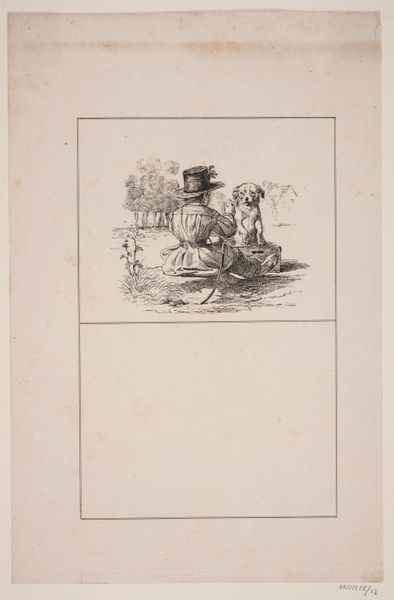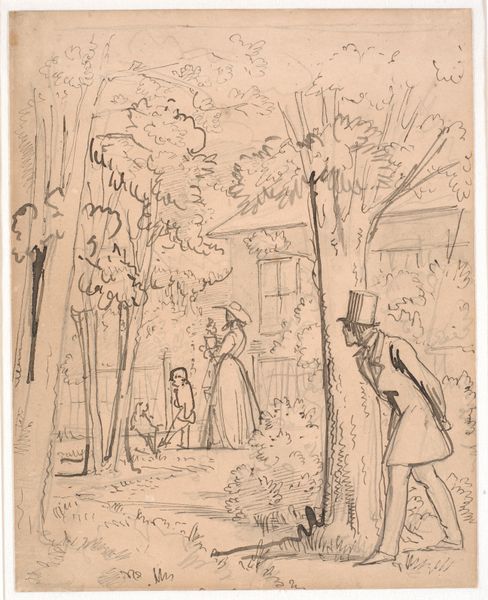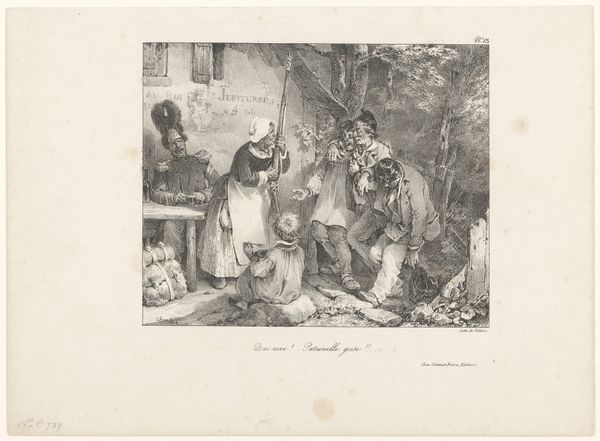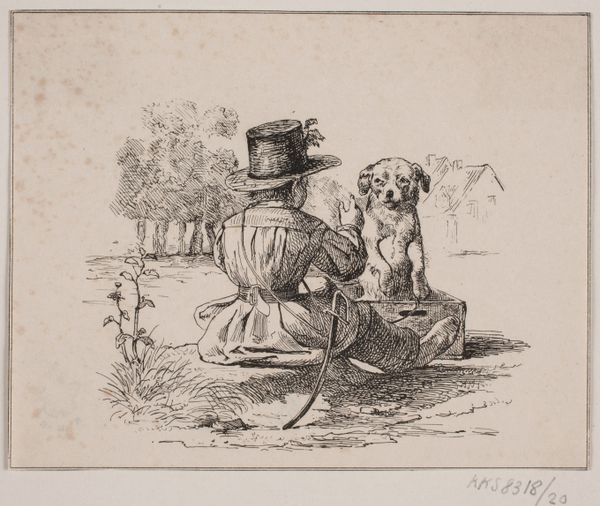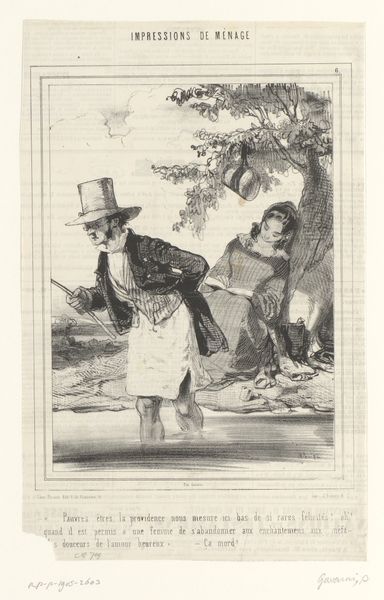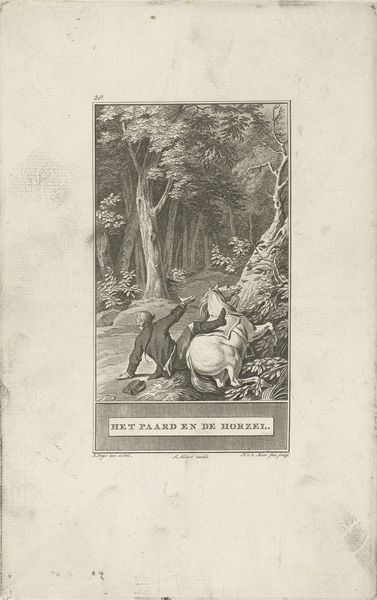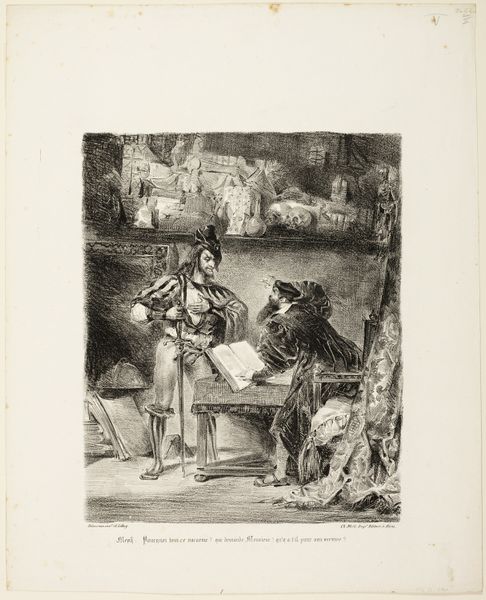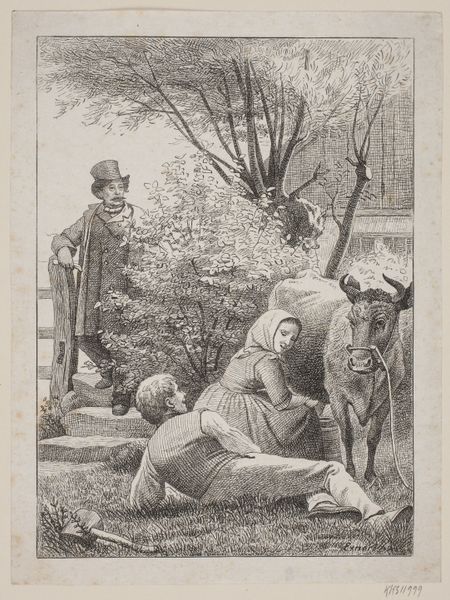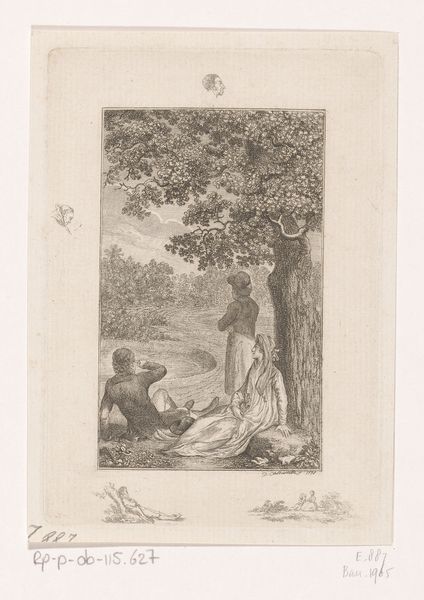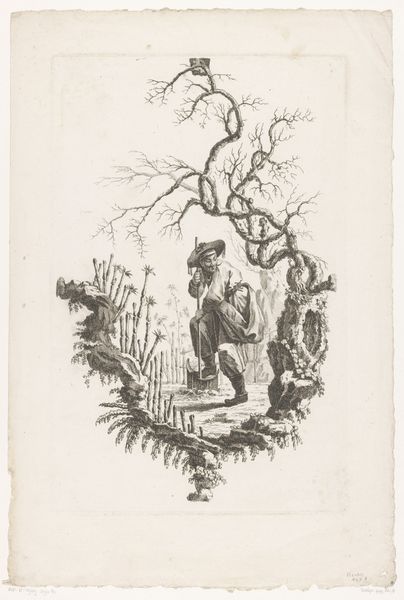
drawing, print, engraving
#
drawing
#
narrative-art
# print
#
figuration
#
romanticism
#
line
#
genre-painting
#
engraving
Dimensions: Sheet (trimmed to plate): 11 3/4 × 9 1/2 in. (29.8 × 24.2 cm)
Copyright: Public Domain
Curator: Let's turn our attention to "Love at First Sight," an engraving produced around 1796, presently housed here at the Metropolitan Museum. The artist is George Shepheard. Editor: My immediate impression is one of lightness, both in subject and line. There’s an airy, almost ephemeral quality despite the detailed engraving. The figures are elegantly posed, but there's something... coy about it all. Curator: Indeed. The composition reveals much about the societal expectations of courtship in late 18th-century England. A young, uniformed gentleman is being presented something, perhaps a matrimonial offering. He stands under a large, arching tree, with what seems to be an outdoor church and house visible behind the leaves, indicating the meeting of these classes in a natural area. Editor: The artist employs a clear, precise line that defines each figure distinctly. Look at the way the light catches the folds of the woman's dress, and the intricate detail on the officer's uniform. But that precision doesn’t necessarily translate to emotional depth. It feels staged, theatrical almost. Curator: Absolutely, it speaks to the staged encounters often facilitated by the parents. The basket bearing its wares becomes a silent player, underscoring how wealth and social standing are very often bartered. There is the working class subject at the front of the artwork, looking to make a living, to better his placement, as his offering is looked over by the potential suitors. Note that only one horse is on the landscape with them. It implies only one of the upper class individuals rode here and it stands idle next to the merchant, rather than both riding the open lands. Editor: Agreed. Consider also the formal arrangements of elements – the central placement of the upper-class couple is drawing a line right between high society and peasantry. It draws the viewer’s eye to it in a semiotic act. The formal arrangements give that sense of an era prioritizing social mores and aesthetic presentation. Curator: Which invites us to look more closely at the power structures implicit in supposed ‘love at first sight’ in that era. It also invites us to question what kind of love are we seeing in an Era that is so constrained with social stratification. It may be Shepheard questioning whether that type of relationship is the answer. Editor: A nuanced take, very well, and with an artwork so reliant on clarity of form, perhaps Shepheard also challenges the viewer to read between the lines, in his carefully, almost diagrammatically, structured scene.
Comments
No comments
Be the first to comment and join the conversation on the ultimate creative platform.


